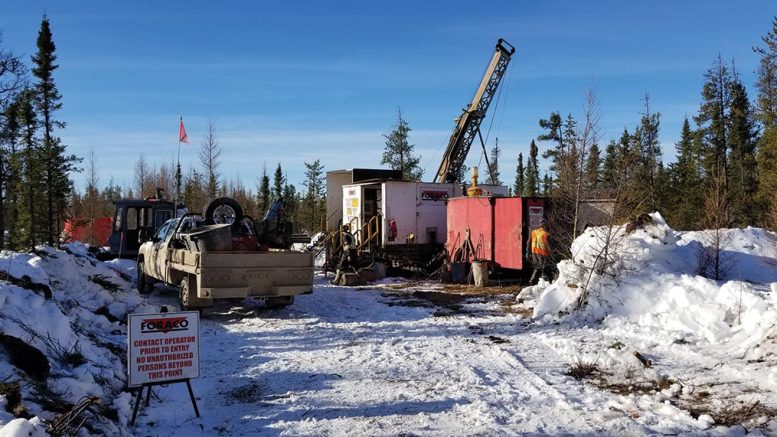Osisko Metals (TSXV:OM) has reported assays for the first four holes drilled as part of an infill and hydrogeological program at the past-producing Pine Point zinc-lead project in the Northwest Territories, 60 km from Hay River. These drillholes targeted the R190 deposit in the West zone at Pine Point, which hosts higher-grade vertical prismatic deposits.
Three of the holes were infill and the fourth was a hydrogeological hole. All three infill intercepts exceeded grade expectations and one also returned a wider-than-expected mineralized interval. Intersections included 27.5 metres of 31.15% zinc and 11.57% lead; 25.8 metres of 24.39% zinc and 14.74% lead; and 8.8 metres of 9.38% zinc and 1.7% lead.
The hydrogeological hole hit 0.5 metres of 33.42% zinc and 4.96% lead, suggesting “good exploration potential” north of the R190 deposit.
Robert Wares, Osisko Metals’ chair and CEO, said the latest assays are some of the “best ever” from Pine Point.
“We are extremely pleased with today’s results as they exceeded current block model predictive grades and are among the best ever reported at Pine Point,” he noted in a news release. “The combination of large widths and high grades at shallow depth confirms the unique nature of prismatic mineralization in this camp, and strengthens our resolve to discover new prismatic deposits within our large property package.”
Additional hydrogeological and infill holes have been completed at the O556, P449 and X25 deposits in the West zone with a 20-hole winter program planned.
A July 2020 preliminary economic assessment defined Pine Point as an 11,250 tonne-per-day open-pit and underground operation, mining 47 small open pits and eight high-grade shallow underground deposits. The proposed 10-year mine would produce an average of 327 million lb. of zinc and 143 million lb. of lead annually at estimated cash costs of U$67¢ per lb. of zinc-equivalent (including smelting, transport and royalties) with a total initial capital cost of $555.7 million.
Pine Point contains indicated resources of 12.9 million tonnes grading 4.56% zinc and 1.73% lead (6.29% zinc-equivalent) and inferred resources of 37.6 million tonnes averaging 4.89% zinc and 1.91% lead (6.8% zinc-equivalent).
Between 1964 and 1987, Pine Point produced 64 million tonnes grading 7% zinc and 3.1% lead.


Be the first to comment on "Osisko Metals reports high zinc, lead grades from Pine Point"